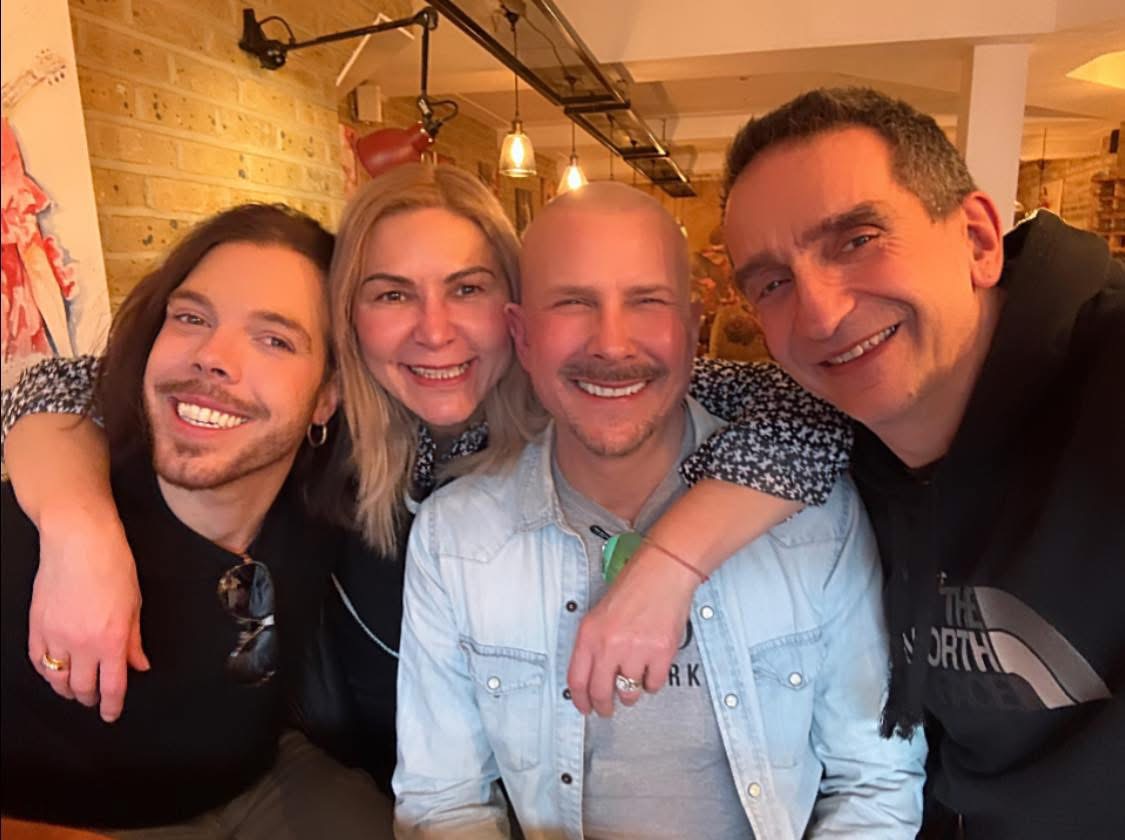
Allen & Heath GS-R24 radiate quality
We recently got a new mixing desk Allen & Heath and we cannot be happier.
For quite a while now there’s been a growing feeling that the studio console is dead – a thing of the past – but with the rise in the use of summing mixers and a switch in production techniques to more live sources, lots of producers and artists have started to re-evaluate the role of the studio console and begin to appreciate the flexibility it gives to a recording setup. We always favoured mixing console and with Allen & Heath GS-R24 we know we did the right thing.
The Allen & Heath GS-R24 is pretty much a combination of everything!
It’s a mixer, a controller and an interface all in one, giving you pretty much everything you could ever need!
The Allen & Heath GS-R24 features 24 mono channels, each with individual faders, mic/line input preamps, 4 band EQ, a meterbridge and more! Also on this mixer, you get 2 valve inputs, 6 auxes, 4 subgroups, a main stereo and mono bus, PFL, AFL, Solo in Place, and 5.1 surround monitoring.
The channel layout is very well thought out. It’s easy to see what everything does and it’s all where you’d expect it to be.
The centre section is very well featured, but here we would question the layout a little. At the bottom sits a jog wheel, with a five-button L/R/Up/Down/Centre configuration above it, but on top of that are eight assignable buttons topped off with the DAW transport controls.
Most of the action will be jog wheel and transport, but you can’t nudge and play without lifting your hand off and that becomes annoying after a while. Further up are the 12 rotary and two MIDI continuous controllers, which is fine, but above them is the headphone out socket.
This can leave the headphone cable trailing over the desk – but fortunately, it’s duplicated on the back panel, so plug it in there and any potential problem is solved.
The rest of the centre section has the usual vertical row of knobs and switches for selecting monitor sources, main and secondary monitors and talkback. There’s also a recessed switch that allows the interface returns 25-30 to be used as 5.1 outputs.
When activated the control room monitor pot switches to surround mode and 25-30 go to six dedicated monitor outputs on the rear panel. Very neat.
To the left of these are the very comprehensive Studio 1 and 2 foldback feeds. These enable a huge amount of control over what you send to the headphones and initially are a bit confusing.
We just want the possibility of sending the main stereo out or a balance from the aux, but they certainly give you the option of building very sophisticated headphone mixes from multiple sources and, once you get your head around them, you do start to appreciate the flexibility. To the left of these are the two-valve channels, which are essentially mic/line inputs with a valve stage incorporating a drive control to add controlled distortion.
Finally, there’s a separate 2U rack-mounted PSU that connects to the desk via a multi-pin cable. Both the desk and the PSU are very well constructed and extremely solid. The whole package looks and feels well built and certainly gives the impression that it’s going to last.
Starting with the mono channels at the top of the strip you have a mic/line gain and four switches handling mic/line switching, polarity (phase), 48V on/off and a high pass filter. Below comes a very flexible four-band EQ section.
Bottom and top are shelved at 12k and 80Hz respectively and the two fully parametric mid bands cover from 18Hz to 18kHz between them. They cross over between 400Hz and 1kHz so there’s plenty of scope to sculpt the mid-range. Below these are the six aux and the pan pot.
Underneath the pan come four switches for stereo, mono and buss assigns and below them are the DAW routing buttons. These lie at the heart of what makes the GS-R24 a very different proposition to most 24-channel consoles, so we’ve explained their functions in the DAW Routing box.
The stereo channels have discrete line inputs and a simpler four-band EQ with fixed frequencies. All the aux sends are available and you can choose input from the line source or DAW.
The valve channels have a mic, line/instrument input or act as a DAW return. As with the mono channel, you have switchable phantom power for microphones and a polarity switch but there is also a boost instrument switch. This kicks in a bit of extra gain when a low-level instrument is plugged into the line input.
Output routing, like a mono channel, goes to L&R, Mono or the groups. There’s no EQ but the interesting bit here is the Drive control that adds in a bit of warm second-harmonic distortion to whatever’s coming in.
The four mono groups can be routed to the stereo out and the mono out, and simply have a pan pot, mute and solo button. That’s nice and simple and gives you the flexibility of being able to individually pan the left and right components of a stereo group.
Ultimately, any mixer lives or dies on its sound – and the GS-R24 certainly wins in this department, too. On acoustic sources the mic pres sound very good.
Using a selection of condenser mics, instruments such as acoustic guitar, as well as percussion and voice, sound full and rich. The mic amps are clear and very clean with good depth and transient response.
The EQs are particularly good in the mid-range which, let’s face it, is where the music is. Hardly a surprise given its pedigree but in the current climate, where low- to mid-priced consoles often sounds pretty thin, it’s great to find one that sounds good and solid.
Bass guitar is often the instrument that will show a console’s weak side but the GS-R24 passes that test with flying colours. Straight into the line input of a mono channel, bass sounds warm and fat right the way down to the bottom of the neck with plenty of tonal variation from the EQ too.
The big surprise is the valve channel. It has a distinctive warmth to it and even when dialling in a lot of drive, the lows still sound fat and solid.
In fact, the valve channel works great on most sources. The distortion added is very subtle and comes out more as harmonic richness than edge.
Running a complete track through it with lots of synths it also impresses. The low end from the EQ sounds balanced and round, and the mid and highs bring the details forward without undue harshness.
There’s plenty of headroom and it seems happy to be driven hard. If anything, pushing it a bit makes it sound even better.
The GS-R24 has a slot on the back that enables you to add an analogue or digital interface board to connect with your DAW. The digital board comes with FireWire and ADAT connections and provides you with 32 ins and outs or get the analogue board and use your own convertors.
Whichever method you choose, the DAW interfaces the same way. Inputs and outputs 1-24 on your DAW connect to the mono channels, 25-26 and 27-28 the stereo channels, 29-30 the Valve channels and 31-32 the master stereo out.
As you’re routing in your DAW you don’t need a patch bay or to move cables on the back panel to crosspatch. Choose an input and assign it, choose output and route to it.
The really clever bit lies in the four DAW routing buttons on the mono channels. Instead of just giving you one way of sending to and from the DAW, each channel can be set up differently: pick up the signal straight after the mic pre while monitoring direct, come out after the eq still monitoring direct, or even come out of the pre, a process in the DAW and return the processed signal back into the channel path.
When mixing or bouncing you can return the signal into the full channel path, go straight to the mix buss via the pan pot, or even route out through the insert and EQ path and back in.
With mix automation, dedicated midi controllers and switching options, Allen & Heath have wisely produced downloadable resource packs for Logic, Cubase, Pro Tools, Reaper and Sonar. These give you all the info and templates you need to get connected quickly and with the minimum of fuss.
The jog wheel and transport controls work exactly as you’d expect, and fader automation is very straightforward. Our test desk had motorised faders and we found it very easy to programme mix moves.
The faders have a very quick response and passed our most extreme mix moves test with flying colours. Channel solo buttons can be set as track arming buttons or even DAW channel mutes, and the dedicated midi controllers give you plenty of options for controlling other DAW functions. Download the user guide from the website for the full MIDI spec and setup notes for your DAW.
The GS-R24 does a very good job of connecting DAW culture with more traditional ways of recording, adding flexibility on both sides. Quick assignment of inputs and outputs, plenty of channels for acoustic and hardware sources, highly flexible and latency-free monitoring capabilities, and a very solid sonic performance, should find favour with all kinds of music makers.







